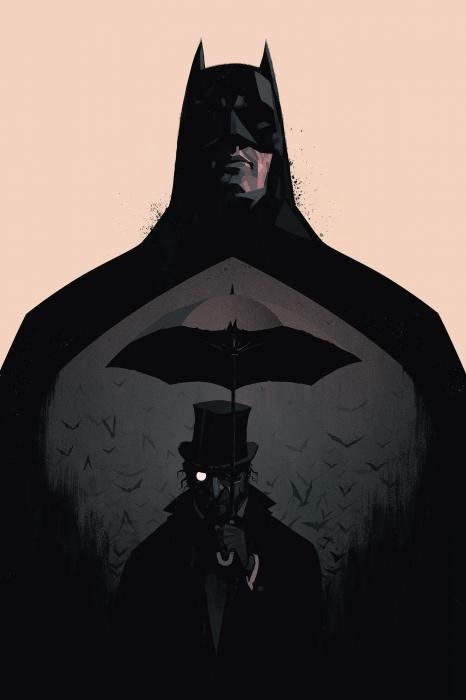"Batman Black and White" #3 has five Batman stories: one street story, one rogue's gallery tour, one detective story, one conceptual piece and last but not least, a story about super-heroism.
"Rule Number One" by Lee Bermejo is a "Rules of the Streets" gang story set in Gotham, as if "Batman" had a crossover with a black and white version of "The Wire," but with less moral nuance. Most of suspense of the story comes not from the interaction on city streets, but from the unnamed narrator and his connection with the Dark Knight. However, the payoff in the final scene doesn't justify all the deliberate evasiveness of the story structure. Bermejo's art is skillful and every panel shows elaborate attention to texture. The last page has a spectacularly photorealistic rendering of light refracting through a lit bike headlight. These plush surfaces enhance the depth and add interest to his cryptically cropped panel compositions. However, whether Bermejo's hyper-detailed pencils and tonal shading are impressive or over-rendered will depend on the reader's tastes.
"Hall of Mirrors" by Damion Scott is a piece driven more by reminiscence than by action or plotting. It is best described as a funhouse tour of Batman's rogue's gallery. The villains are classified neatly by motivation, with glimpses of Catwoman, Joker, Penguin, Mr. Freeze and Two-Face. There is almost no dialogue, and the turning points or guideposts are provided by Batman's brooding monologue, split into textboxes. The monologue itself is a pastiche of philosophical meanderings and stale phrases that feel like recycled song lyrics. In addition, Scott's jagged lines and high contrast art work against the atmosphere of Hamlet-like self-analysis and dreamlike tone of the ideas. However, Scott's art makes up for the thinness of the script. His daring, dynamic panel compositions nail the "Hall of Mirrors" concept and also build up Batman's emotional turmoil. Thus, like some songs, the final product is more successful than just the words.
Out of all the stories about the World's Greatest Detective, "An Innocent Man" by Marv Wolfman and Riccardo Burchielli is the only Batman tale that is a detective "brains-only" story, quest for truth and justice. The solution is heavily foreshadowed and the twist is no surprise. Wolfman's setup is creative, but the pacing is too compressed in the middle. The mystery needs more doubt and more time to gather enough suspense to be a satisfying whodunit. However, Burchielli's art works well and its fluid heavy black inks are a good match for the dark but stoic tone.
"Namtab: Babel Comes to Gotham" by Rian Hughes is a theoretical piece, starting with its title and ending with a "just fiction from the butler" framing device. It is postmodern, but so gaily ironic that it makes fun of Postmodernism. Hughes heavily namechecks cultural theory, contemporary art, comics theory and constantly breaks the fourth wall. It also a zany, retro space story that is really just a vehicle for all the ideas. This is conceptual art, and it will not be every reader's thing. That said, Hughes' enthusiasm, his cartoony style and the ridiculous sheer density his allusions, metanarrative makes for a different and often amusing reading experience.
"Role Models," the final story by Paul Dini and Stephane Roux is an old-fashioned delight that will also inspire nostalgia for fans of the 1990s Batman animated cartoons. It is narrated from the point of view of Jennifer, a Gotham city kid and kidnap victim. Jennifer's voice and point of view give a familiar setup a fresh feel and upbeat tone without being too cutesy. The conflict resolution is predictable, and the pairing of Poison Ivy and Harley for a "Villainess' Night's Out" is also nothing new. However, Harley and Ivy are a classic pair for good reason, and Dini's pacing and dialogue make the interactions and plot feel sparkling and fun. In terms of mastery and ease of style, "Role Models" is the strongest story of the anthology.
"Batman Black and White" #3 is an excellent showcase of wildly different interpretations of Batman and Gotham from classic mystery to high concept theory. It was excellent idea to revive this Batman anthology concept after its first successful go-around.

